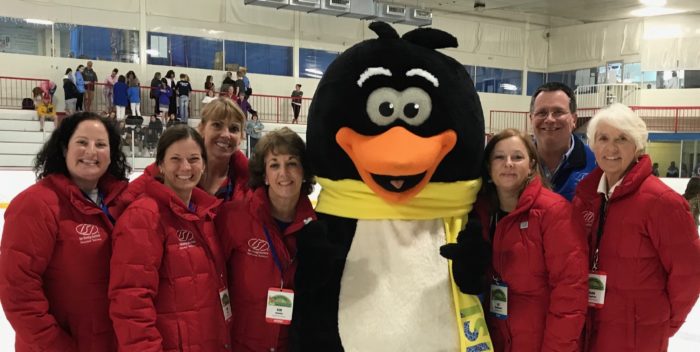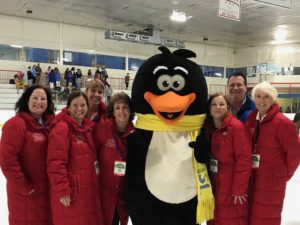Judges Are People, Too!
by Kim Hansen
Have you ever wondered about the judges at competition? Who are they? What are they looking for? Will they like your skating, your music, your outfit? Will they forgive your fall, your traveling spin or your missed step? Do they know you’re nervous, confident, tired or sick?
It’s only natural to wonder about these things. After all, these are the people who watch every detail of your performances and make decisions about what you have presented to them. It can be intimidating to see them sitting there and not know what is going through their minds. And while all judging is based partially on opinion, there are some things that are always true.
Judges want you to do well.
All ISI judges are coaches who spend some portion of their time teaching skaters just like you. They know how hard it is to master the tricks you are performing, and they know how hard you have worked to put these into a nice program. They love skating and they want you to love it, too. It gives judges great pleasure to see skaters go out on the ice and truly do their best.
Judges understand that you might be nervous.
You can’t fool the judges into believing that you’re not nervous if your knees are shaking, but the good news is, most of these people either were or are skaters and they know how you feel. There is nothing more normal than to feel anxious when you take the ice for a performance, but don’t let the presence of the judges add to your anxiety. Remember, they are on your side and they want you to succeed.
Judges follow the rules to protect all skaters.
Being an ISI judge requires more than just being a coach. These are coaches who have studied the ISI rules and have taken and passed tests to demonstrate that they understand these rules and know how to apply them in competition.
This means that they may have to give a penalty score now and then when someone does something outside of the rules. This is not meant to be cruel, but rather to protect everyone else who did what they were supposed to do. While judges know that sometimes a penalty score is earned unintentionally — meaning the skater simply made a mistake — they still have to follow through with the penalty to keep the competition fair for everyone.
Judges recognize mistakes as well as exceptional quality.
It’s always hard to smile through a program when you know you have made a mistake. Your first thought will probably be “I wonder if they noticed?” The answer, most of the time, is “Yes, they noticed.” But just as they noticed you put your foot down on your Salchow, they also saw how nicely centered your change-foot spin was. They have the ability to separate the good and the bad and to consider both. This is especially true in ISI judging because rather than each judge simply looking at the performance as a whole and giving one or two blanket scores, ISI judges each have different criteria they are looking for. This means that one judge might have given you a third-place score on your Salchow, but the other judge , who is looking for the change-foot spin, might have given you the highest score in that column.
We call this vertical judging, which means that we compare your moves individually against each of the other skaters’ same move. You can think of it as “comparing apples to apples and oranges to oranges” — as opposed to “fruit basket to fruit basket.”
If you have ever wondered why you do not see what place each judge gave you, this is the reason. Since they are judging different things, unless you were consistent in every maneuver, it would be unlikely that their placements all matched and therefore that becomes less important than the combined score of all three judges.
Kim Hansen is ISI’s director of skating programs and national events.

 MY COACH ROCKS
MY COACH ROCKS TEAMS IN SYNC
TEAMS IN SYNC EXPRESS YOURSELF
EXPRESS YOURSELF FOCUS ON ARCHIVES
FOCUS ON ARCHIVES COMPETITORS’ CORNER
COMPETITORS’ CORNER NEWS & NOTES
NEWS & NOTES







